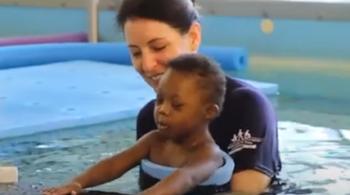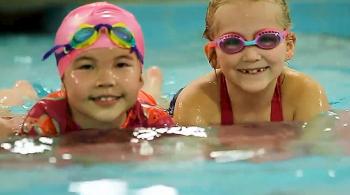Setting and accomplishing goals can be very empowering. Goal setting is an excellent skill to teach to younger children because the process can have lasting impact, paving the way for a successful adulthood.
Parents can begin teaching a child how to make and meet goals at any time in a youngster’s life. In a parent-child goal project, everyone involved should reinforce and assist each other in focusing on goal achievement. Parents can serve as inspiring role models by creating their own goals. Sometimes, a child’s sense of focus and achievement will surprise his or her parents.
The ingredients for success in goal setting and achievement are essentially the same for children and adults, with one major difference: While adults can set and track multiple goals in a year, it’s recommended that children, depending on their maturity, set only one to three goals, to increase their chances of successful completion and to bolster their sense of confidence. Goals can be social, academic, athletic, emotional or behavioral in nature.
Be careful not to impose a goal on a child—doing so will make it more likely the child will abandon any plans for attainment. This isn’t an exercise in which an adult should cajole, manipulate or dictate goals to a child—that strategy is guaranteed to backfire. Instead, presenting sample goals will help a child feel he or she is free to choose his or her own goals. We provide some sample goals at the end of this article.
Most of us learned about goal setting at some point in school. We know goals need to be specific, measurable, attainable, outcome-oriented, planned out and time-bound (i.e., they need to have an established and meaningful time frame or deadline). Without a plan for tracking and executing smaller achievements, a majority of individuals will abandon their goals—a study by the Statistic Brain Research Institute recently found that very few people (a mere 9.2 percent), achieve their new year’s resolutions.
Here are some tips to help increase success for goal-setters of any age:
- Consider your reasons for setting each goal.
Before committing a goal to paper, review your underlying reason for achieving it. The chances of following through are greater when the core reason is strong and not superficial. - Be sure to write down your goals and your step-by-step plans for achieving them.
The subconscious mind can alter actions on a daily basis, but writing down a goal and your plan for achieving it will help you believe in your intent. - Track your plan.
What are the steps required to achieve a goal? Create or draw a roadmap as a guide, use a calendar, and make the process fun. - Take significant action.
Finding motivation and inspiration on a daily basis can be difficult for anyone. It is easy to get sidetracked. Temptations like social media, socializing, overindulgence in television, and just plain old procrastination can separate a person from his or her goals. There are so many time stealers out there, but the sense of accomplishment accrued when a plan is followed through to completion is so much better than the feelings generated when one gets off track.
- Track your progress.
With children, it’s especially important to reward approximations of any behaviors that move a child toward a written goal. Focus on and reinforce the positive steps taken toward reaching the goal, and more such steps will follow. - Plans aren’t static—adjust them when necessary.
Daily goal setting helps keep the process realistic. Larger milestones are more easily achieved after they’ve been broken down into smaller segments. Understanding that goals aren’t achieved overnight requires considerable patience and delayed gratification. - Celebrate!
Routinely take time to celebrate small successes. This bolsters a child’s sense of accomplishment and helps him or her develop the patience required for some of life’s more complicated goals. Of course, the flip side of celebrating is: NO NAGGING. A child’s goal should never become part of a parent-child power struggle.
Tools for Setting Attainable Goals
To start the thinking process, have your child finish each sentence below as a precursor to establishing resolutions.
This year, I want to…
This year, I need to…
This year, I’m going to start…
This year, I’m going to stop…
This year, I’m going to learn…
Signed: ____________________
Some examples of resolutions and goals:
Idea: I want to be more popular among the kids in my class.
Resolution: “This year, I’ll make more friends. Each week, I’ll invite someone over for a play date. At school, I’ll invite potential friends to sit with me at lunch.”
Idea: I want to get all A’s this semester.
Resolution: Each month, I will get better than a B on all my quizzes and papers. And, I will ask my teacher for extra help and advice on how to study better.
And for younger children…
Idea: Achieve better hygiene.
Resolutions:
- I will wash my hands after using the toilet and before I eat anything.
- I will make my bed at least five mornings a week.
- I will use words instead of hitting to solve problems.
- I will put away my toys after I play with them.















